Dectin-1 and IL-17A suppress murine asthma induced by Aspergillus versicolor but not Cladosporium cladosporioides due to differences in β-glucan surface exposure
- PMID: 22962686
- PMCID: PMC3470885
- DOI: 10.4049/jimmunol.1200589
Dectin-1 and IL-17A suppress murine asthma induced by Aspergillus versicolor but not Cladosporium cladosporioides due to differences in β-glucan surface exposure
Abstract
There is considerable evidence supporting a role for mold exposure in the pathogenesis and expression of childhood asthma. Aspergillus versicolor and Cladosporium cladosporioides are common molds that have been implicated in asthma. In a model of mold-induced asthma, mice were repeatedly exposed to either A. versicolor or C. cladosporioides spores. The two molds induced distinct phenotypes, and this effect was observed in both BALB/c and C57BL/6 strains. C. cladosporioides induced robust airway hyperresponsiveness (AHR), eosinophilia, and a predominately Th2 response, whereas A. versicolor induced a strong Th17 response and neutrophilic inflammation, but very mild AHR. Neutralization of IL-17A resulted in strong AHR and eosinophilic inflammation following A. versicolor exposure. In Dectin-1-deficient mice, A. versicolor exposure resulted in markedly attenuated IL-17A and robust AHR compared with wild-type mice. In contrast, C. cladosporioides induced AHR and eosinophilic inflammation independent of IL-17A and Dectin-1. A. versicolor, but not C. cladosporioides, spores had increased exposure of β-glucans on their surface and were able to bind Dectin-1. Thus, the host response to C. cladosporioides was IL-17A- and Dectin-1-independent, whereas Dectin-1- and IL-17A-dependent pathways were protective against the development of asthma after exposure to A. versicolor.
Figures
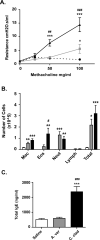
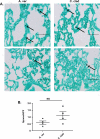
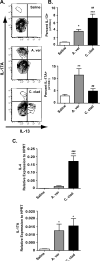
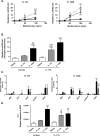
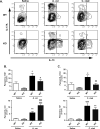
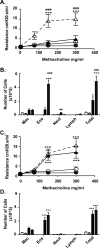
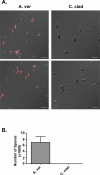

Similar articles
-
Surface availability of beta-glucans is critical determinant of host immune response to Cladosporium cladosporioides.J Allergy Clin Immunol. 2013 Jul;132(1):159-69. doi: 10.1016/j.jaci.2013.01.003. Epub 2013 Feb 10. J Allergy Clin Immunol. 2013. PMID: 23403046 Free PMC article.
-
Lipopolysaccharides promote a shift from Th2-derived airway eosinophilic inflammation to Th17-derived neutrophilic inflammation in an ovalbumin-sensitized murine asthma model.J Asthma. 2017 Jun;54(5):447-455. doi: 10.1080/02770903.2016.1223687. Epub 2016 Sep 2. J Asthma. 2017. PMID: 27589490
-
IL-17A promotes the exacerbation of IL-33-induced airway hyperresponsiveness by enhancing neutrophilic inflammation via CXCR2 signaling in mice.J Immunol. 2014 Feb 15;192(4):1372-84. doi: 10.4049/jimmunol.1301538. Epub 2014 Jan 20. J Immunol. 2014. PMID: 24446518
-
Molecular Mechanisms of Airway Hyperresponsiveness in a Murine Model of Steroid-Resistant Airway Inflammation.J Immunol. 2016 Feb 1;196(3):963-77. doi: 10.4049/jimmunol.1501531. Epub 2016 Jan 4. J Immunol. 2016. PMID: 26729801 Free PMC article.
-
Role of IgE in the development of allergic airway inflammation and airway hyperresponsiveness--a murine model.Allergy. 1999 Apr;54(4):297-305. doi: 10.1034/j.1398-9995.1999.00085.x. Allergy. 1999. PMID: 10371087 Review.
Cited by
-
Collaborative interactions between type 2 innate lymphoid cells and antigen-specific CD4+ Th2 cells exacerbate murine allergic airway diseases with prominent eosinophilia.J Immunol. 2015 Apr 15;194(8):3583-93. doi: 10.4049/jimmunol.1400951. Epub 2015 Mar 16. J Immunol. 2015. PMID: 25780046 Free PMC article.
-
Surface availability of beta-glucans is critical determinant of host immune response to Cladosporium cladosporioides.J Allergy Clin Immunol. 2013 Jul;132(1):159-69. doi: 10.1016/j.jaci.2013.01.003. Epub 2013 Feb 10. J Allergy Clin Immunol. 2013. PMID: 23403046 Free PMC article.
-
Environmental exposures and mechanisms in allergy and asthma development.J Clin Invest. 2019 Apr 1;129(4):1504-1515. doi: 10.1172/JCI124612. Epub 2019 Feb 11. J Clin Invest. 2019. PMID: 30741719 Free PMC article. Review.
-
Co-recognition of β-glucan and chitin and programming of adaptive immunity to Aspergillus fumigatus.Front Microbiol. 2015 Apr 21;6:344. doi: 10.3389/fmicb.2015.00344. eCollection 2015. Front Microbiol. 2015. PMID: 25954267 Free PMC article.
-
The Interaction of Human Pathogenic Fungi With C-Type Lectin Receptors.Front Immunol. 2018 Jun 4;9:1261. doi: 10.3389/fimmu.2018.01261. eCollection 2018. Front Immunol. 2018. PMID: 29915598 Free PMC article. Review.
References
-
- Pleis JR, Lucas JW, Ward BW. Summary health statistics for U.S. adults: National Health Interview Survey, 2008. Vital Health Stat. 2009;10:1–157. - PubMed
-
- Bloom B, Cohen RA, Freeman G. Summary health statistics for U.S. children: National Health Interview Survey, 2008. Vital Health Stat. 2009;10:1–81. - PubMed
-
- Sahakian NM, Park JH, Cox-Ganser JM. Dampness and mold in the indoor environment: implications for asthma. Immunol Allergy Clin North Am. 2008;28:485–505. vii. - PubMed
Publication types
MeSH terms
Substances
Grants and funding
LinkOut - more resources
Full Text Sources
Medical
Molecular Biology Databases

